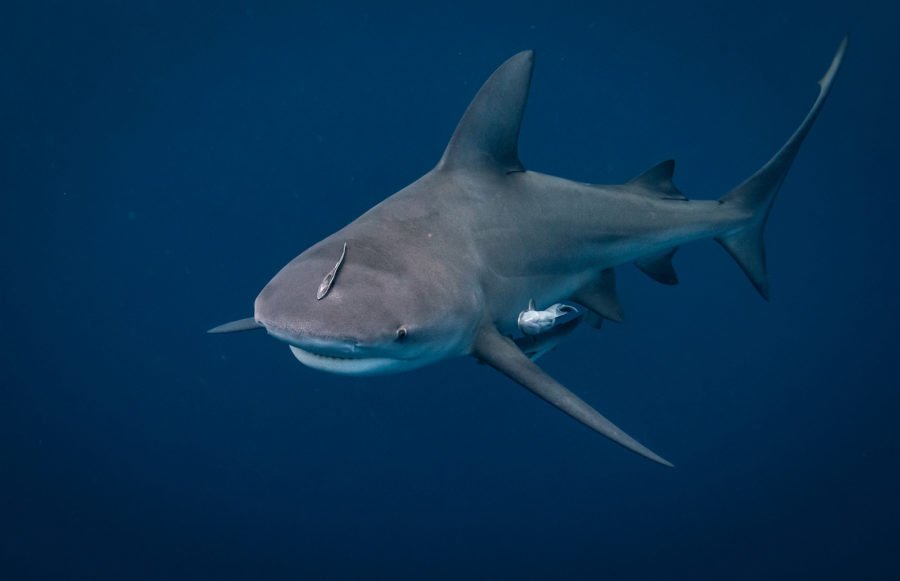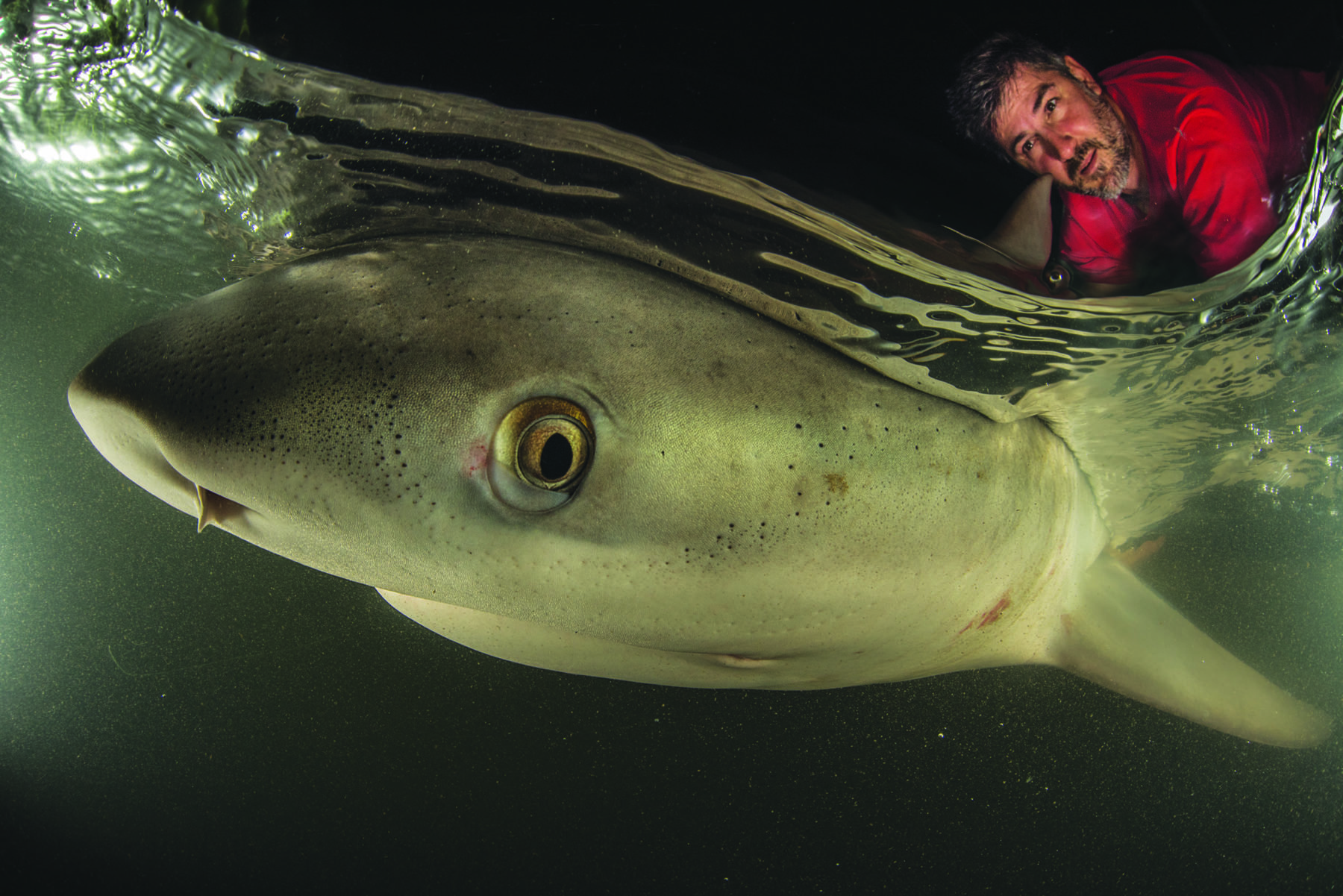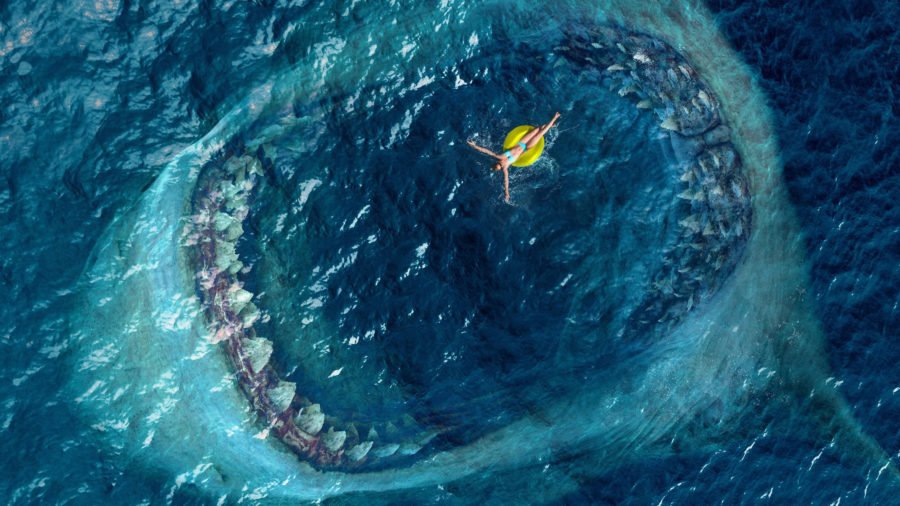Bull sharks: fact from fiction

Which shark is the most dangerous? The answer will always depend on who you’re talking to. The ‘big three’ as they’ve come to be known are the great white, the tiger and the bull shark, and each carry their fair share of dangerous attributes. That said, most shark experts will agree the bull shark, despite having not clocked as many bites as the great white, is the most dangerous.
With its characteristically blunt head and ‘aggressive’ behaviour, the bull shark moves seamlessly between freshwater and saltwater environments, posing a threat to the coastal dwellers who have taken up shop in its original digs – those rivers, harbours and lakes most humans enjoy splashing around in.
Shark ecologist Dr Johan Gustafson has spent more time around bull sharks than the average person. Working out of the Griffith Costal and Marine Research Centre on the Gold Coast, Johan has been monitoring the movements and behaviours of bull sharks of that south-eastern Queensland region. Here, Johan answers some of the biggest questions about bull sharks.
How can bull sharks go from freshwater to saltwater?
Unlike most sharks, bull sharks have the ability to live in both fresh- and saltwater environments. Typically, saltwater marine animals have high concentrations of salt in their bodies. If they were placed in freshwater, a process known as osmosis – in which their cells accumulate freshwater until they swell and die – would take place.
Bull sharks on the other hand can regulate the concentration of salt in their blood according to whatever environment they’re swimming in, minimising salt loss or increasing salt gain when necessary. Johan says this is one of the best breeding strategies.
“Sharks tend to keep their pups away from adult populations, and it’s not just bull sharks that do this, hammerheads do it too. Even white shark juveniles stay closer to the coastline. The further away your pups are from adult populations, the less predation and the higher the survival rate.” Bull shark pups have been found up to 60km inland, giving them a good chance to mature before making their way to the ocean.
Are bull sharks aggressive?
According to Johan, it depends what you mean by aggressive. Interactions between humans and bull sharks are more likely than interactions with other species of shark because they inhabit the same areas, and this can leave the impression that humans are being specifically targeted by bull sharks, which isn’t true. We just occupy the same environment.
They do, however, have less tolerance than other sharks when provoked. “They tend to react more, which results in a higher chance of an investigatory bite, which is a soft bite that most sharks do when they want to figure out what something is, but their teeth are so sharp and their bite strength so strong that we suffer catastrophic consequences.” So, it’s more curiosity than aggressiveness.
Warmer waters also have an effect on their behaviour. “When they go into warmer waters their metabolism increases so they are more active. You could say they’re being more aggressive, but you could also say they’re just more active.”
Are bull sharks stronger than other sharks?
In addition to their perceived aggressiveness, bull sharks are also known for their strength, which Johan says is warranted.
“They have a huge bite pressure per kilogram of weight compared to their body length.
“Compared to other sharks, it’s on the high end of the spectrum. It depends on the size of the animal. Obviously a 2m bull shark won’t have the same bite strength as a 4m great white shark, but if you have a 2m white shark and 2m bull shark, the bull shark will have a stronger bite.”

Are bull sharks really “swarming” our cities?
Over the past decade, there have been a number of sensationalist headlines suggesting that bull shark populations are growing and swarming local swimming hotspots. As Australian Geographic shark editor-at-large Blake Chapman reported in 2019, when it comes to shark populations, we simply don’t know.
‘Counting fish is like counting trees, but you can’t see them and they move around all the time’ is a popular saying used by marine biologists. Johan himself, who’s been tracking the movement of bull sharks, is no stranger to the difficulty in calculating shark populations. Satellite tagging and tracking of bull sharks costs a lot of money and takes a significant amount of time. Tagging just one shark can take several hours according to Johan.
So, what’s giving people the impression bull sharks are swarming? Johan puts it down to habituation. “Sharks are like dogs,” he says. “If you give them positive reinforcement they get habituated. If you’re fishing in an area or discarding a large amount of bycatch regularly, bull sharks will come into those areas and eat the discarded bycatch. It’s a food source.
“People who say they’re swarming are usually fishos that are noticing a mass amount of sharks behind their boats as they are driving through fishing hotspots. Sharks are there anyway, they eat the same food.”
It also has something to do with evolution. “When a fisherman catches a fish and is reeling it in, that fish is stressed and releases stress markers into the environment and that’s what bull sharks and other sharks have evolved with over a long period of time. They seek it out, they pick up on those signals and they go after those fish. And they’ve learnt that when one’s caught on that hook it’s an easy catch.”
Because of their proximity to humans, bull shark populations may even be under threat. On the Gold Coast, the decimation of mangrove habitat means less food and less places to breed for the bull shark, decreasing their chance of survival. “Over a long period of time we think their population is decreasing, if our food source was less abundant we’d be facing population decreases too.”
How do we stay safe?
Earlier this year, a man was bitten by a bull shark in the Swan River in Western Australia and left with critical injuries. It was the first time in half a century that a shark bite had taken place in that area. In the past 20 years, there have been two fatalities in rivers of the Gold Coast. It’s a surprisingly small amount considering how present bull sharks are in our river systems.
Johan says tagging data of bull sharks has revealed some previously unknown behaviours of bull sharks, which may help us to stay safe.
“We’ve found that rainfall is a big trigger for bull sharks to come into rivers and that’s because of the change in salinity. Over 60mm in a period of a few days and the water freshens out and attracts the sharks. People should stay well away from rivers after heavy rainfall.” For this reason, it’s also a good idea to avoid murky water.
As for saltwater environments, you can read some of our top shark safety tips here.


